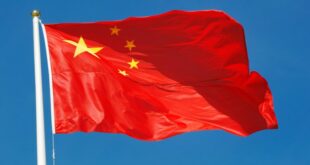
At a Glance
- The National Economic and Development Authority (NEDA) estimated that over seven million Filipinos could have been lifted out of poverty if inflation had remained within the government’s target over the past two years.
- NEDA Secretary Arsenio M. Balisacan said that high inflation rate weakened the purchasing power of poor Filipinos, or those in the bottom 30 percent income households.
- Between 2021 and 2022, the average income of the poorest 30 percent of Filipinos increased by an average of 19.7 percent.
- The latest data from the Philippine Statistics Authority (PSA) indicated that if the 16 percent estimate had been realized, it could have been equivalent to 18.2 million, meaning that an additional 7.2 million Filipinos should have been able to escape poverty.
- President Marcos admitted that inflation has been the primary challenge in recent years, consistently surpassing the government’s target range of 2.0 percent to 4.0 percent. Over the first 11 months of 2023, inflation averaged 6.9 percent.
- The Marcos administration’s target is to lower the poverty rate to a single-digit level of nine percent by 2028.
The National Economic and Development Authority (NEDA) has estimated that over seven million Filipinos could have escaped poverty if inflation had remained within the government’s target over the last two years.
NEDA Secretary Arsenio M. Balisacan said that the high inflation rate, which averaged 4.2 percent in 2021 and 6.6 percent in 2022 for the bottom 30 percent income households, has weakened the purchasing power of indigent Filipinos.
The bottom 30 percent income households refers to Filipino families who earn the least amount of money compared to others.
“Had the inflation rate for the bottom 30 percent been at four percent in 2021 and another four percent in 2022, the cumulative increase in poverty threshold would be around 8.2 percent instead of 14.2 percent,” Balisacan said.
The government’s poverty threshold increases because the cost of living in the country rises due to factors such as increased expenses for food and housing.
From 2021 to 2022, the average income of the poorest 30 percent of Filipinos, however, increased by an average of 19.7 percent.
“We note that per capita income among those in the first income decile (the poorest 10 percent of our population) increased by 21.4 percent, and those in the second and third deciles increased by 19.4 and 18.3 percent, respectively,” Balisacan said.
“Assuming the same increase in income, poverty incidence among the population would have been about 16 percent instead of the observed 22.4 percent,” the NEDA chief revealed.
According to the latest data from the Philippine Statistics Authority (PSA), 25.4 million Filipinos were living in poverty in the first half of the year.
If the 16 percent estimate by Balisacan had been realized, it would have been equivalent to 18.2 million individuals, suggesting that an additional 7.2 million Filipinos could have risen out of poverty if inflation did not go beyond four percent.
In his last State of the Nation Address (SONA), President Marcos admitted that inflation has been the “biggest problem” encountered in recent years as it continues to be above the government target of 2.0 percent to 4.0 percent.
In the first 11-months of 2023, inflation averaged 6.9 percent.
The Marcos administration aims to reduce the poverty rate to nine percent by 2028, bringing it into the single-digit range. — Chino S. Leyco
*****
Credit belongs to: www.mb.com.ph
 Atin Ito First Filipino Community Newspaper in Ontario
Atin Ito First Filipino Community Newspaper in Ontario






